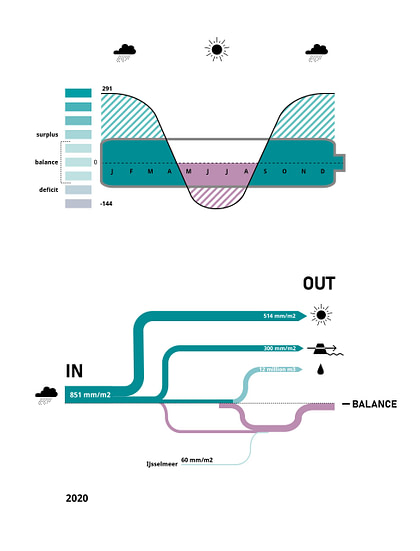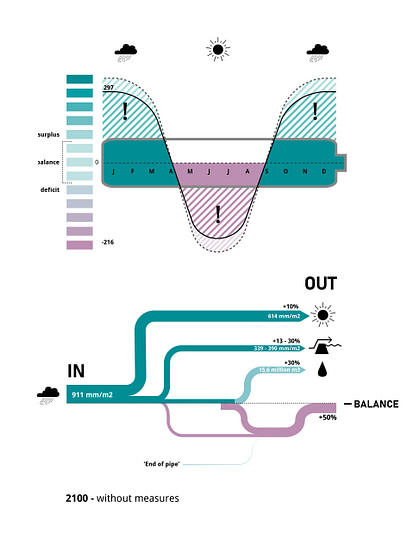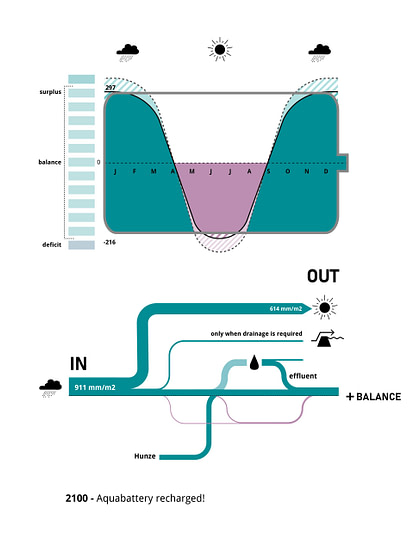

2020 - 2021
Aquabattery
2020 - 2021
Aquabattery
The northern flank of the Hondsrug forms a steep border to the low, wet peat landscape of the Hunze Valley. After the penultimate ice age, the subsoil of the Hunze Valley was filled with fine sand, later covered by thick pillows of raised peat. Nowadays there is a low moor landscape around the Zuidlaardermeer has been largely laid out as a nature reserve. The desire to allow this area to benefit from the seepage water from the Hondsrug is at cross-purposes with Groningen’s drinking water extraction, which also takes place here. Although the Hunzevallei borders Hoogezand, Haren and Groningen, the area is not easily accessible; the city and nature areas lie here with their backs to each other.
Hunzevallei
Gemeente Groningen
5000 ha
With less precipitation and more evaporation, parts of the northern Netherlands are at risk of drying out in the summer. The freshwater supply from the IJsselmeer lake to these areas will become more uncertain in the future. In winter the surplus precipitation is drained away to the Wadden Sea; a process that is made more difficult by the rising sea level. This will create a water safety problem. Enough fresh water must be stored in the Hunze Valley to prevent peat oxidation, extract thirty percent more drinking water, and be able to export fresh water to surrounding areas.
With Aquabattery Recharged, the imbalance between precipitation surplus and the deficit is turned into a local and natural source of fresh water. The Hunze river valley becomes a sponge landscape that makes optimal use of the supply of fresh seepage water from the higher Drents Plateau. The landscape recharges itself like a battery in the wet winter months. This ensures that there is enough drinking water in the dry summer months and promotes the development of peat nature. It also eliminates the dependence on water supplies from the IJsselmeer.











